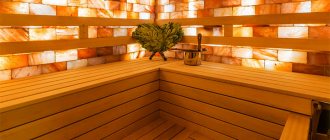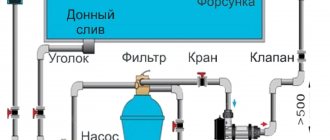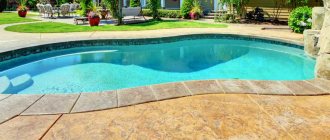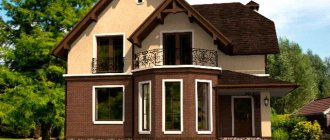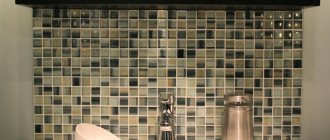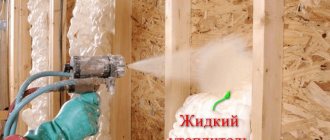In modern construction, ceramic bricks and building stone can be found at every step. Thanks to the development of new technologies, building materials are manufactured in a variety of colors and shapes. All this variety of shapes and colors is regulated by GOST 530-2012. This document approves the appearance of the products, conditions of use and technical characteristics.
Advantages of hyperpressed bricks
Hyperpressing allows you to produce products with ideal geometry. Crushed bricks are used for cladding, and smooth bricks are used both in ordinary masonry and as facing bricks. The variety of shapes, textures and a wide palette of colors allows you to create complex architectural elements. In addition to aesthetic advantages, such bricks also have a number of technical advantages:
- High strength and resistance to aggressive external environments.
- Low water absorption.
- Ecologically pure.
- Easy to process. It cuts perfectly with a regular grinder.
- “Special order” - the ability to produce building materials with increased strength indicators - up to M 500 and frost resistance - up to F300.
- It can “breathe”, since a cement film does not form on the products, which also reduces adhesion to the solution.
What kind of material is this?
Hyperpressed brick is a high-strength building material, which is mainly used for cladding and construction of external structures: arches, gates, fences. This means that its front surfaces (poke and spoon) must be of ideal quality. Such masonry does not require further processing in the form of plastering walls or cladding, which significantly saves money and construction time. Hyper-pressed limestone brick can be machined; it is easily cut with a grinder with a low percentage of waste and scrap.
Hyperpressed brick GOST
March 30, 2021
Hyperpressed brick appeared on the territory of the Russian Federation in the late 80s of the 20th century. Soviet engineers adopted production technology from Western specialists, and not without their own merits associated with unraveling the “secret” of the raw material composition. In 1986, an exhibition of achievements in construction technologies was held in Moscow with the participation of representatives from far abroad
Among the abundance of high-tech equipment presented by European partners, the attention of Soviet specialists was attracted by hydraulic presses for the production of soil-concrete building material
The management of the Tula Brick Factory purchased an exhibition copy of the hydraulic machine, and soon the first batch of bricks made from a semi-dry mixture of soil and concrete was produced, which caused great disappointment to the manufacturer. As it turned out, this brick was completely unsuitable for use in construction work, characterized by poor frost resistance and low strength.
However, the engineers continued their experiments, experimenting with different types of fillers, and soon achieved the desired results using crushed limestone as the main raw material. This is how the first hyperpressed brick appeared in Russia, which soon aroused interest among developers due to its unique strength, density, aesthetic appeal and resistance to negative environmental influences.
Since 1990, technical requirements established by state standards have been applied to HIPERPRESS materials. Currently, GOST 6133-99, compiled in 1999 under the wording 'concrete wall stones', applies to hyper-pressed bricks. For hyperpressed bricks, GOST requires compliance with the technology and chemical composition of the products.
In accordance with GOST 379-95, the minimum permissible tensile strength of hyper-pressed products must correspond to the M-150 grade. Other technical characteristics of products are not regulated by GOSTs, however, they are determined by the technology for obtaining the material. The products have a water absorption of 4.5 to 8%, a thermal conductivity of 0.4-0.45 W/m*K° and a minimum frost resistance of grade F-100 (see Hyper-pressed brick characteristics).
Having such a short history of use in our country, hyperpressed brick belongs to the representatives of a new generation of construction and finishing materials. The new standard of the technological process allows us to obtain exceptionally durable material without waste and significant energy consumption. Among other things, natural raw materials of natural origin are used as a filler, which guarantees the environmental purity of the product.
Hyperpressed products are used today for a wide variety of purposes - to strengthen and decorate the façade of buildings, to lay plinths and foundations, to create fences and small architectural forms, to cladding interior elements, to build protective dams and other loaded objects.
The advantages of hyperpressed brick are its versatility, elegant appearance, and immunity to the vagaries of nature. Low hygroscopicity and good frost resistance ensure durability and guarantee that stone walls will last for at least 100 years without requiring repairs.
Articles News
Characteristics of Lego bricks
May 30, 2021
Working qualities and density of hyperpressed bricks
May 27, 2021
Fences and pillars made of Lego bricks
May 24, 2021
Hyper-pressed hollow brick "Lego"
May 21, 2021
Hyper-pressed products
May 18, 2021
Varieties
According to their design, hyperpressed bricks are divided into three groups:
- Full-bodied.
- Hollow. Up to 40% technical holes and cracks.
- Lego. This is a subspecies of hollow, which has two protrusions-spikes on the upper edges and two grooves on the lower ones. This lock provides better adhesion of the masonry.
According to its purpose, hyperpress bricks can be ordinary or construction, as well as facing. The latter type has many textures, shapes and colors:
- Yellow smooth "Lithos". With and without beveled corners.
- "Rock". Rough and softer texture.
- Cornice. With smooth curved curves.
- Angular. It has an L-shape for perfect finishing of corners.
- Snickers. A narrow brick with a chipped surface.
- Torn stone.
Briefly about hyperpressed brick
Before studying the technological process, it will be important to understand: what is hyperpressed brick, what properties does it have, and why is it so remarkable for developers.
Main characteristics, types and scope of application
Essentially, the products are made from a mixture of lime and cement. It also contains some additives, which we will talk about in more detail later.
Now let's pay attention to the main technical characteristics of the products:
- Strength – 100-400 kg/cm2
. This is a fairly high figure. This numerical value allows the material to be used in the construction of buildings whose number of storeys is not limited. - Thermal conductivity.
Due to the high values of density and strength, the thermal conductivity of the material is slightly increased. It ranges from 0.43 to 1.09 W*mS. - Water absorption
. Hyperpressed brick is hygroscopic, but the value is not at all high and amounts to 3-7%. - Frost resistance
of products can reach up to 300 cycles of time-based freezing and thawing. Not many wall materials can boast of such an indicator. - Hyperpressed brick, in accordance with GOST, is a non-combustible material
, which only increases its attractiveness among consumers. - Volumetric weight is 1900-2200 kg/m3.
It is also worth noting that the material is environmentally friendly and extremely durable.
Hyperpressed brick has several classifications. According to its purpose, it is divided into front and private; depending on the shape - regular, curly; in accordance with the design - hollow and solid.
The standard size is 250*120*65. However, other options are also being produced. Narrow products are characterized by a size of 250*60*56, spoon ones - 250*85*65.
Some possible sizes of hyperpressed bricks
The weight of the standard product is 4.2 kg.
If we talk about the scope of application, then for hyperpressed brick it is extremely wide
It is used in the construction of buildings and load-bearing structures, an important characteristic for which is strength. However, under wet operating conditions it weakens
Therefore, when constructing plinths and the underground part of foundations, this type of brick is not used.
Facing products are actively used in cladding, construction of fences, gazebos, and landscape design.
Strengths and weaknesses of the material
Like any other product, hyperpressed brick has its own set of positive and negative sides. Let's look at them.
The advantages are:
- The strength characteristics
, as already mentioned, of hyperpressed brick are extremely high. - Frost resistance of products
is a significant plus. The indicator leaves many competitors of the material behind. - Reduced hygroscopicity
. A value of 3-7% is small, therefore, in general, this fact should be attributed to the positive features of the products. - The durability of the material
leaves no doubt. The building can last up to 300 years without a significant decrease in properties. - The range of products is also large
. Brick can be of various shapes, sizes, colors and purposes. - The material is characterized by climate resistance.
- Aesthetic appearance
and almost ideal geometry of products. - Wide range of application of the material.
- The ability to carry out construction work with your own hands.
- All-season work.
- Environmental friendliness, fire resistance.
- Ease of material processing.
- Good level of adhesion with masonry mortar.
The disadvantages are as follows:
- Hyperpressed brick cannot be called a budget material. Its price is relatively high.
- The products have considerable weight, which significantly increases the load on the base of the building. As a result, the foundation must be strong and massive, which means additional time and money.
- The material requires a drying procedure before masonry work, and for the maximum possible time.
- Reduced ability to maintain temperature due to high density and strength values.
As you can see, the shortcomings are reduced to a minimum, so we can safely say that hyperpressed brick is closer to the ideal material than many others.
Photos of chipped brick houses
Have you noticed the relief of the facade? It has a peculiar chip - this is the calling card of hyper-pressed brick. The chipped brick relief looks impressive on the fence - we didn’t forget to add photos of fences to the collection. Another type of hyperpressed brick are models with a torn surface. This is an imitation of the uneven processing of a product, but elevated to the level of art. Looking at the photo of the masonry of brick houses, one does not get the feeling that this is a defect of the manufacturer. Pay attention to the photo of the gazebo. An interesting solution is to use hyper-pressed brick as the basis for an open summer structure. If you don’t like the “wrinkles”, gouges, abrasions and scratches of rustic brick, then the antique surface can be recreated using chipped relief.
Characteristics and composition
Hyperpressed brick is an artificial stone, for the production of which granite screenings, shell rock, water and cement are used. Cement in such compositions acts as a binder, and its share in relation to the total mass is usually at least 15%. Mining waste and blast furnace slag can also be used as raw materials. The color of the products depends on which of these components will be used. Thus, screening of granite gives a gray tint, and the presence of shell rock colors the brick in yellowish-brown tones.
In terms of its performance characteristics, the material is quite similar to concrete and is characterized by high strength and resistance to aggressive environmental influences. In terms of its reliability and durability, pressed bricks are in no way inferior to clinker models and can be used as the main building material for the construction of permanent walls. Visually, it somewhat resembles natural stone, which is why it is widely used in the design of building facades and fences. In addition, cement mortar is able to mix well with various pigments and dyes, which makes it possible to produce brick in a wide range of colors and use it as a decorative cladding.
The main characteristics of hyperpressed brick, which determine its working qualities, are density, thermal conductivity, water absorption and frost resistance.
The strength of hyperpressed brick is largely determined by the density of the material, which averages 1600 kg/m3. Each series of artificial stone corresponds to a certain strength index, which is designated M (n), where n denotes the strength of the material, which for concrete products ranges from 100 to 400 kg/cm2. Thus, models with the index M-350 and M-400 have the best strength indicators. Such bricks can be used for the construction of load-bearing masonry walls of the structure, while products of the M-100 brand belong to the front models and are used only for finishing.
An equally important characteristic of stone is its thermal conductivity. The heat-saving ability of the material and the possibility of its use for the construction of residential buildings depend on this indicator. Solid hyperpressed models have a lower thermal conductivity index, equal to 0.43 conventional units. When using such material, it should be taken into account that it is not capable of retaining heat inside the room and will freely release it outside. This must be taken into account when choosing a material for the construction of main walls and, if necessary, take an additional set of measures to insulate them. Hollow porous models have the highest thermal conductivity, equal to 1.09 conventional units. Such bricks contain an internal layer of air that does not allow heat to escape outside the room.
The frost resistance of hyperpressed products is indicated by the index F (n), where n is the number of freeze-thaw cycles that the material can endure without losing its main working qualities. This indicator is greatly influenced by the porosity of the brick, which in most modifications ranges from 7 to 8%. Frost resistance of some models can reach 300 cycles, which allows the material to be used for the construction of structures in any climatic zones, including the Far North.
The water absorption of a brick refers to how much moisture a stone can absorb in a certain amount of time. For pressed bricks, this figure varies between 3-7% of the total volume of the product, which makes it possible to safely use the material for exterior finishing of facades in areas with a humid and maritime climate.
About efflorescence
Efflorescence is the result of crystallization of salts on the surface of the brick. Crystallization is preceded by the migration of water-salt solutions in the pores of the material with their subsequent release to the surface. The brick consumes water from the mortar. Salts soluble in water are absorbed by the brick and, when dried, carried through capillaries to the surface, where, after the water evaporates, salt crystals are deposited in the form of whitish spots - efflorescence. How to prevent efflorescence?
- use cement with a low content of soluble salts, i.e. not lower than M400; - use a hard (thick) solution; - do not spread the mortar on the front of the brick; - do not lay bricks during rain and cover the fresh masonry after finishing the work; - bring the house under the roof as quickly as possible; — cover the façade with a protective water-repellent composition; - upon completion of the construction of the walls, the installation of gutters and drainage is carried out. After the construction of the masonry, to prevent the appearance of efflorescence on the facades, it is recommended to use water-repellent coatings - water repellents. The recommended products are given below: - “Tiprom K” - a water repellent that has an antifungal, water-repellent effect (consumption - 0.08 l/m2); — “Facade-1” is a water repellent based on ultra-thin acrylic dispersion. Protects against moisture and efflorescence without changing the color of the brickwork (consumption - 0.3 l/m2); — “Armocryl” — polyacrylic varnish. Waterproof, vapor-permeable, UV-resistant. Gives the surface an attractive glossy effect, protects against paint fading, burning and washing out, increases the strength of not only bricks, but also cement mortar due to polymerization of the protective varnish layer. It is recommended to apply two layers of Armocryl varnish with an interval of 12 hours (consumption - 0.21-0.26 l/m2); — “BETOLAS III” is an acrylic-based impregnating sealant. Provides complete hydrophobization, saturates the natural color of brickwork (consumption - 0.3-0.35 l/m2); — Varnish “VVM-M” is a moisture-resistant impregnating varnish based on organosilicon compounds. It has water-repellent properties, protects against efflorescence, exposure to aggressive acidic environments, and is an antiseptic for imparting mold, fungus, and termite resistance to structures made of concrete and brick (consumption - 0.3-0.35 l/m2). What to do if efflorescence has already appeared? If you still make a mistake in masonry technology and efflorescence appears, then: - use folk remedies - a solution of 0.4% acetic acid (2 tablespoons of 9% table vinegar per liter of distilled water) or a 5% solution of hydrochloric acid, or a solution ammonia; - use special means: “Facade-2” - liquid cleaner of facades from atmospheric pollution (consumption - 0.4-0.5 l/m2) or "Tiprom OF" - cleaner from efflorescence and atmospheric pollution (consumption - 0.25 l /m2); - be patient and wait - most of the efflorescence is washed away by rain in a year or two.
Stages of business organization, brief profitability analysis
Since we have decided to talk about profitability, it is worth briefly considering the main stages of creating a business that precede the launch of production.
Opening an organization, organizing production
Let's use the table. Table 1. Business plan for the production of hyperpressed bricks: stages of implementing a business idea.
Name of the stage Its content, timing and comments
Preparation of constituent documentation, administrative procedures
This process will take from 2-3 days to several weeks. Much depends on the form of ownership, the number of founders and some other factors.
Search for suitable premises for warehouse, production and legal address
The timing is purely individual. It is better to give preference to places with good infrastructure.
An organization's expenses directly affect its income level and, as a result, its future profitability.
Selecting an Equipment Supplier
A particularly important stage
Attention should be paid to the cost, equipment, delivery times and country of origin. Chinese models are usually less expensive, but not always of high quality
Mistakes made when choosing a set of machines can have an extremely negative impact on the result.
Search for suppliers of raw materials, purchase
The most relevant would be the purchase of raw materials through a tender. Firstly, this will help you choose the most inexpensive option, and secondly, the requirements for suppliers, in this case, practically exclude the possibility of concluding a supply agreement with an unscrupulous seller.
Commissioning and installation of equipment, trial batches
It usually takes no more than 2-3 days. The next stage after commissioning will be testing and production of a trial batch of goods.
Launch of production
Possible after completing all previous steps.
Product distribution routes, advertising and marketing
Advertising is an important part of running a successful business. Agree, before purchasing, a potential consumer should find out about the existence of the organization. And the greater the audience reach, the greater the chances of speedy implementation.
It is worth working in all directions at the same time. These include mailings, bulletin boards and other various advertising steps.
Implementation
Accompanied by documentation and, as a rule, delivery.
It is best to get your own transport. This is beneficial and convenient for the buyer.
Technical and economic component
The profitability of production is influenced by many factors, which include:
- Region and its climatic conditions. That is, a climate suitable for using the material.
- Purchasing power of the region.
- Organizational expenses associated with conducting business activities, strict adherence to the business development plan.
- The cost of raw materials and equipment and, as a consequence, the cost of products.
- The quality of the original products and much more.
It is not possible to make an accurate calculation of economic profitability, since everything is individual for each development path. We can only guess.
- Let's imagine that the cost of 1 unit of brick with texture is 18 rubles. Its market value is 22 rubles.
- The cost will include all expenses, including the tax base, deductions, employee salaries, rent, utility bills, and so on. In general, everything except the cost of the equipment.
- The daily output volume is, suppose, 4000 bricks. If we manage to sell all the products, then the income will be: 4000 * 4 = 16,000 rubles. As a rule, factory production runs uninterruptedly and seven days a week.
- Monthly income, in this case, will be 480,000 rubles.
- The cost of a budget conveyor line is about 5,000,000. This means that production will pay off in about 10 months.
This course of events cannot be called the most optimistic, but it is as close to reality as possible. If the production volume is twice as large, then more expensive equipment will be needed. In most cases, the maximum payback period is one year.
Types and features
Hyperpressed products have a fairly extensive classification, which can be based on their shape, size, number of textured planes or purpose. These parameters have a greater impact on the decorative properties of the stones, while the performance characteristics and cost are determined by the design. Here the cladding is traditionally divided into two types:
- full-bodied;
- hollow (perforated or slotted).
Not long ago, another type appeared - hyper-pressed Lego brick. Thanks to its unusual shape, it was possible to solve the problem of poor adhesion of piece material to masonry mortars. As a result, the labor costs of builders for the construction of false walls have decreased and the speed of work has increased. But in terms of cost, there was no big gain, since ordinary sand cement is not used here - you will have to buy special glue, although its consumption is small.
Other advantages of Lego:
- Less weight due to large through holes.
- Easy installation - only the first row is leveled.
- Possibility of hidden communications.
Classification
Hyper-pressed brick has classification characteristics similar to two other types of bricks - ceramic and silicate:
- by purpose - ordinary and facial (smooth or embossed with a poke and/or spoon);
- by design - solid and hollow (perforated and slotted);
- in shape - in the form of a regular parallelepiped (with sharp or rounded corners) and figured.
Reference. Each pair of identical faces of a brick has its own name: bed - the largest (working) planes; spoons - medium-sized edges (it is they that remain visible in the finished masonry from the inside and outside); poke - the end faces of a brick.
Figured, or shaped, bricks can also be divided according to purpose: some perform a purely decorative function, others combine it with a practical one - cornice, corner, etc. The relief of facing bricks, also called chipping or “wild stone”, is created only on one or two edges.
Due to the fairly high cost, the use of building (ordinary) bricks is justified in the construction of earthquake-resistant buildings. Basically, products obtained by the method of double-sided hyperpressing serve as an excellent facing material, which, in addition to the decorative effect, strengthens the structure and protects from high humidity and other adverse influences.
Brick dimensions L×W×T, mm:
- Single (1NF) 250×120×65
- Narrow (0.6NF) 250×60×65
No less common are combinations of length and thickness of 230 and 65 mm with a width of 107, 100, 56 or 50 mm.
Tests of hyperpressed bricks
In the Russian Federation, in ROSTOVAGROPROMSTROY, in 1996, comparative tests were carried out on the adhesion strength of ceramic and hyper-pressed bricks with cement mortar, in accordance with GOST 24992-81 “Stone structures”. Methods for determining the adhesion strength in masonry - at 14 days of age. A masonry mortar with a strength of 100 kg/cm2 was used at 28 days of age.
Adhesion strength of ceramic and hyper-pressed bricks with mortar
Thus, the strength of masonry made from hyper-pressed bricks on cement mortar is 50-70% higher than from ceramic bricks on the same mortar.
The intralayer strength of masonry made from hyper-pressed bricks of traditional geometry (smooth) is 1.7 times higher than the intralayer strength of masonry made from ceramic bricks of the same geometry and with the same mortar.
The layer-by-layer strength of masonry made from hyper-pressed bricks of traditional geometry (smooth) on masonry mortar is 1.7 times higher than the layer-by-layer strength of masonry made from ceramic bricks of the same geometry and on the same mortar.
Keeping in mind that hyperpressed bricks themselves are 50-70% stronger than ceramic bricks, and their adhesion to mortar is 75-100% higher than with ceramic ones, the strength of masonry made from them is 50-70% higher than from ceramic ones.
Brick produced using hyperpressing technology
The compressive and bending strength of bricks and the compressive strength of stones without deducting the void area must be no less than the values indicated in the table. Brick and stones must be frost-resistant and, when saturated with water, must withstand delamination, peeling, cracking, and spalling without any signs of visible damage: In certain southern climatic regions, with the permission of the State Construction Committee of the Union Republic, it is allowed to produce bricks and stones with frost resistance of at least 15 cycles of alternating freezing and thawing, if, based on the experience of past construction in these areas, these products ensure the durability of the external enclosing structures of buildings.
Bricks and stones of the highest quality category must meet the following requirements:. Glazed surfaces of bricks and stones of the highest quality category must additionally meet the following requirements:
Bricks and stones must be accepted by the technical control department of the manufacturer, which guarantees that the bricks and stones comply with the requirements of this standard provided that the consumer complies with the conditions of their loading, transportation, unloading and storage.
The batch size of bricks and stones is established in accordance with GOST. To test products for frost resistance, an additional 5 pieces are selected. Samples are taken from different cells or trays in a pre-agreed sequence.
Review of manufacturing technology
Now it’s time to take a closer look at the technological process. It’s worth starting with a list of necessary equipment and materials that will be needed to start production.
Necessary equipment and materials
As in the production of almost any product, equipment can be used of different types, depending on the level of automation of the entire process.
The most expensive and efficient in terms of the volume of daily output are conveyor-type lines. They are controlled by the operator. All actions occur purely automatically. The products are of the highest quality.
Landline lines are more affordable. The output volume can reach 50-80 m3 per day.
Stationary production line for hyperpressed bricks
The standard set of equipment includes the following set of machines and installations:
- Forming plant;
- Several conveyors (belt and screw);
- Component dispensers;
- Mixer;
- Bake.
Scheme for the production of hyperpressed bricks
The composition of hyperpressed brick includes the following components:
- Cement grade 400-500 – about 15%;
- Lime;
- Granulated blast furnace slag;
- Crushed stone screening;
- Iron oxide pigment – about 7%;
- Clay brick scrap;
- Some waste left over from processing ores and minerals.
Hyperpressed brick: the composition is characterized by a high lime content
It is also worth noting that in addition to factory production, it is possible to make hyper-pressed bricks with your own hands. In this case, the production of bricks by dry pressing requires the presence of a hand press.
The mixture for products can be mixed either manually or using additional devices.
As a rule, independent production is organized in order to save money. When selecting inexpensive equipment, this is quite feasible. However, you should be prepared to spend time, and a significant one.
Step-by-step breakdown of the release process
The technology for producing hyper-pressed bricks, or rather its main feature, is that slightly moistened components are subjected to strong pressing. This causes the solution molecules to stick together.
As a result, the products are extremely durable and dense; the properties of such bricks are as close as possible to natural stone. This process is somewhat reminiscent of cold welding technology.
The production technology of unfired bricks contains a number of stages. The instructions are as follows:
- Component dispensers supply raw materials in the required volume;
- The mixture is mixed;
- Next, molding is done by pressing;
- Molded products are dried, as a rule, in specialized chambers (furnaces), and the products are not fired;
- Next, the brick must be aged for about a month in the finished goods warehouse. Storage must be carried out at positive temperatures.
Range of finished products
If there is no oven, for example, when making it yourself, the brick can be left in its raw form for 5 days. The effect will be the same.
Unfired brick can be additionally subjected to rustication - processing of the product, as a result of which decorative chips are created.
Ready-made rusticated brick
There is no state standard for the production of such products. The production of pressed bricks is carried out based on the standards for the manufacture of ceramic products. This applies to sizes, permissible deviations and some other indicators.
As for the values of technical characteristics, hyperpressed brick is several times ahead of ceramics.
The video in this article: “Business plan for the production of hyperpressed bricks” contains detailed information about all stages of the manufacturing process.
Production
Many people are interested in the peculiarities of the production of such material.
Hyperpressed bricks are produced using a non-firing method. The manufacturer mixes cement and high-quality limestone, dilutes it with water, adds dyes and mixes the mixture thoroughly.
Semi-dry pressing uses a small amount of water. Its share in the material does not exceed 10% of the total mass.
From the resulting mass it forms the appropriate types of bricks. That is, full-bodied or hollow. Then the products are put under a hyperpress, which weighs 300 tons. The pressure reaches 25 MPa.
At the next stage, the workpieces end up in the steaming chamber. Here the brick is exposed to a temperature of 70 degrees Celsius for about 10 hours. Steaming allows the cement to gain the necessary moisture. As a result, the product gains almost 70% of its strength at this stage.
Another 30% is received within the next month after production is completed. Only after 1 month the brick is ready for use.
The absence of a cement film improves the adhesion of products compared to concrete. Plus, it provides self-ventilation and allows the walls to literally breathe. Also, we do not receive chipped and heterogeneous bricks, but products of the same and regular shape. This makes working with it much easier.
Advantages and disadvantages
High consumer demand for dry-pressed concrete bricks is due to a number of undeniable advantages of this material.
- The increased resistance of stone to extreme temperatures and high humidity allows the stone to be used in construction and cladding in any climatic zone without restrictions.
- The ease of installation is explained by the correct geometric shapes and smooth edges of the products, which significantly saves mortar and makes the work of masons easier.
- High bending and tear strength distinguishes hyperpressed models from other types of bricks. The material is not prone to cracking, chipping or dents and has a long service life. The products are able to maintain their performance properties for two hundred years.
- Due to the absence of a concrete film on the surface of the brick, the material has high adhesion to cement mortar and can be used at any time of the year.
- Absolute safety for human health and environmental purity of the stone are due to the absence of harmful impurities in its composition.
- The surface of the brick has dirt-repellent properties, so dust and soot are not absorbed and are washed away by rain.
- A wide range and a wide variety of shades greatly facilitates the choice and allows you to purchase material for every taste.
The disadvantages of hyperpressed brick include the large weight of the material. This requires that the maximum permissible load on the foundation be compared with the mass of the brickwork. In addition, the stone is prone to moderate deformation due to thermal expansion of the material, and over time may begin to swell and crack. At the same time, the masonry becomes loose and it becomes possible to pull the brick out of it. As for cracks, they can reach a width of 5 mm and change throughout the day. So, when the facade cools, the cracks noticeably increase, and when it heats up, they decrease. Such mobility of brickwork can cause many problems with walls, as well as with wickets and gates built from solid brick. Among the disadvantages, they note the tendency of the material to burn out, as well as the high cost of the products, reaching 33 rubles per brick.
Builder reviews
Relying on the professional opinion of builders, hyperpressed brick shows excellent adhesion strength to cement mortar, exceeding similar indicators of ceramic bricks by 50-70%. In addition, the index of intralayer density of masonry concrete products is 1.7 times higher than the same values for ceramic products. The situation is the same with layer-by-layer strength; it is also higher for hyper-pressed bricks. The high decorative component of the material is also noted. Houses lined with hyper-pressed stone look very dignified and rich. Attention is also drawn to the increased resistance of the material to low temperatures and high humidity, which is explained by the low water absorption of the products and excellent frost resistance.
Thus, hyper-pressed models outperform other types of material in several respects and, with the right selection and proper installation, can provide strong and durable masonry.
To learn how to lay hyperpressed bricks, see the following video.
Fill out the form and our specialist will help you completely FREE!
Photos of houses made of hyper-pressed bricks
Where to buy hyperpressed bricks in Belgorod
HyperBel Company
is a large trading and production company operating successfully in the Belgorod market, the company has formed high economic and human capital, being one of the leaders in the building materials market.
(Brick Ceramics LLC) was founded in March 2009. Today the company's staff numbers more than 30 people. The company's first office was opened in Belgorod, the second sales office was opened in Yaroslavl in April 2010, the third in October 2011 in Moscow. In 2014, a sales office and regional warehouse were opened in Voronezh. At the end of 2015, a sales office and warehouse were opened in Sevastopol. In February 2021, a sales office was opened in Simferopol.
